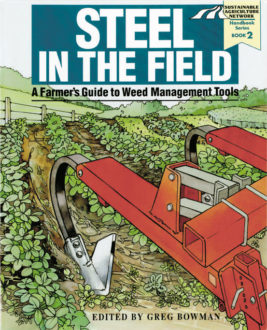Agronomic Row Crops
Guidance Systems
Even with well-adjusted tools doing excellent work, driving a tractor to cultivate hundreds of acres is a tedious job that demands uncommon powers of concentration, alertness and quick response to occasional obstructions. Guidance systems use mechanical, hydraulic and electronic methods to detect cultivator movement in relation to the crop row, then move the tractor, the hitch or the tool to restore the desired alignment. Adoption of guidance systems is nearly routine on 12-row and larger equipment in the upper Midwest.
Benefits include relief of driver stress, closer cultivation to the row, great precision on sloping fields - especially on contour strips - and increased acreage covered due to faster speeds. (See 'Precision guidance technology can pay its way)
Mechanical guidance systems use wheels or panels that follow soil contours. These tracking devices physically hold the cultivator to the location of an elevated soil berm (in beds or ridge-till rows) or furrow.
Electronic guidance controls take their cues from slender wands or dragged furrow weights suspended from the toolbar. The wands run along the soil surface near the base of crop plants, while furrow weights run in row middles. A shaft connects these wands or weights to a switch box on the toolbar. Sensors within the box detect shaft rotation when the cultivator moves away from its centered alignment, then signal the hydraulic system to make its compensating motion. Residue, protruding dirt clods or stiff weeds can compromise accurate crop sensing.
More sophisticated systems use microprocessing computers and on-board diagnostics. These allow the operator to vary the sensitivity and frequency of the system's response, and to monitor a digital or graphic readout of the tool's alignment.
TIP: Automatic guidance systems of any type increase wear on parallel linkage and other joints due to frequent re-centering movements.
